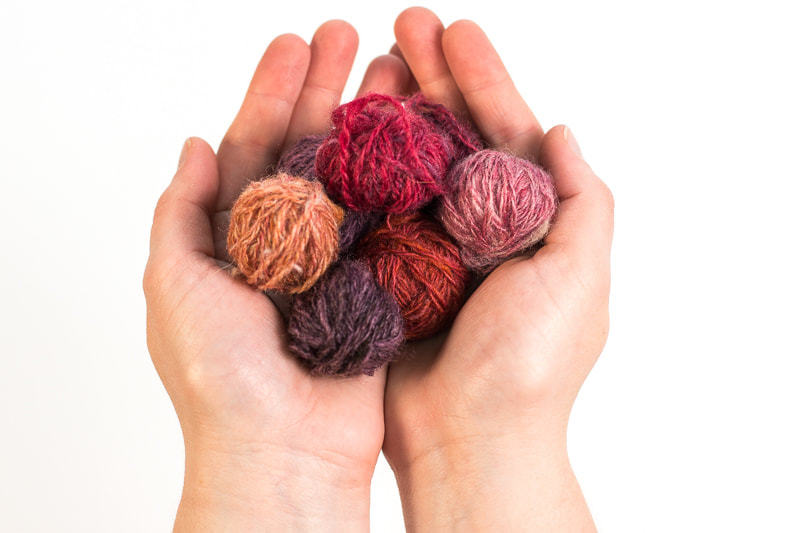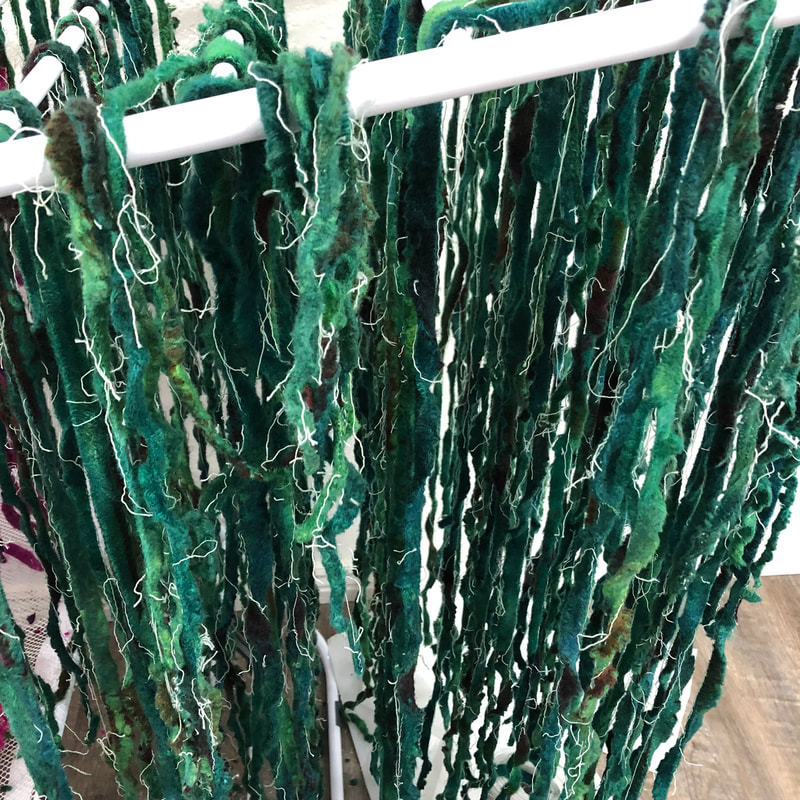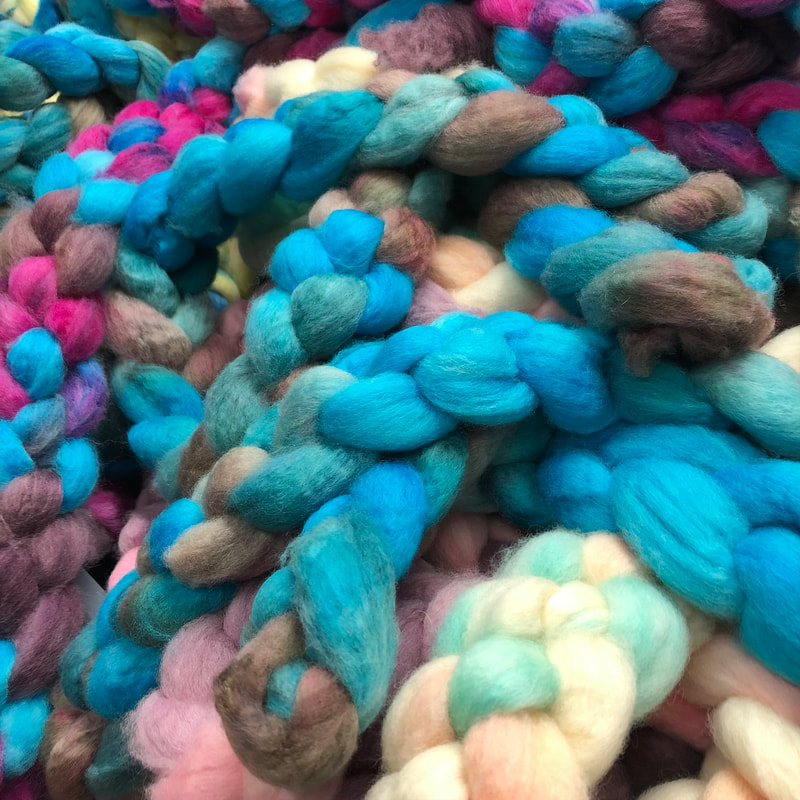|
If you're staying at home to help flatten the curve of COVID-19, you might have more time on your hands to knit, spin, weave, crochet, or participate in other fiber arts. This can be a silver lining, and it is also a time to make sure you're taking care of your hands! It would be a huge bummer to be staying inside with hands that are too sore to knit!
I shared some of these links a few years ago, when I was suffering from repetitive stress at work. Now, they're updated with a few more tips I've discovered. ICYMI, How to wash your hands. And, if you're tired of humming "Happy Birthday" twice through, you can use this website to come up with a different song (plus a downloadable poster). And don't forget the lotion! If you're missing that massage you'd normally get during a manicure, here's how to massage your own hands. This video helped me a ton. And I wish I had incorporated the exercises from this video a little bit sooner. Esther Rodgers (aka Jazzturtle) has a great class called Fiber Preparation for Spinning. Don't let the title of the class fool you - she shares lots of ergonomical tips and exercises for taking care of our most precious equipment - our bodies. We Are Knitters has this handy infographic. It moves! (Is gif-o-graphic a word?) If you're more into the written word, Carson Demers is the expert on ergonomics for knitters. He has this fantastic book, and he's written a few great articles for Ply Magazine, too. He also has an interview on the Fruity Knitting Podcast. (Interview starts at about the 41 minute mark) Everything we do with our bodies has a cumulative effect, which is why I love "spoga," aka Spinners' Yoga. Also great for knitters, weavers, crocheters, rug hookers...basically anyone who sits down and uses their hands to craft. I'd love to know if there are any other resources you find really helpful for keeping your hands in tip-top shape! I bet I don't have to say it, but here it is - everything is up in the air right now. I'm still showing up to work, because it's pretty much the same as working from home. My husband and I run our businesses out of our big warehouse building. It's just us and one employee, so social distancing and sanitizing the surfaces we touch are all pretty easy. Or not easy, but very, very possible. We don't have many visitors and have shut down our normal "open to the public hours" for now. I'm lucky that I still feel like I have somewhere to go, but everything is topsy turvy. Like a lot of other folks, I've had at least one event cancelled due to COVID-19, and there's the possibility that more will be canceled. It's really hard to tell how much of an impact this is having on my business, since this is the first year I signed up to do fiber festivals. Instead of doing my normal dye runs last week, I decided to experiment instead. I was gifted a bunch of "worms," or offcuts from Pendleton blankets. These are a by-product of the industrial weaving process, and people can buy them for weaving, rug hooking, and more. I have a big stash of them, but they weren't really in colors that were exciting to me, so I decided to see what would happen if I overdyed them. Usually when I dye, I'm using pretty exact formulas to get exactly the colors I want. But with these, I eyeballed everything. When the pink was getting *too pink,* I threw in a handful of unspun BFL locks to absorb the extra dye, a tip I learned from Suzy Brown of Fibery Goodness.
There's still a huge pile of braids waiting for labels and to be listed on my website. I also have a couple of new products to photograph and list, so those will be coming soon. But for now, I'm trying to do as much offline as I can, so I don't fall down the rabbit hole of reading headlines. How are you staying busy? One of the most fun parts of my job is spinning up samples of fiber so people can have an idea of what it might look like once it's spun. (Of course, there are many, many ways to spin a braid - each of my samples is just one possibility!) This sample is Hush, spun from merino fiber. It's also available on Falkland fiber. For this sample, I stripped the braid into narrow sections of top, and spun my singles to between 48-56 wraps per inch, using my Ultimate Spinner's Multitool. After plying, a washing, and a light "thwacking," the two-ply fluffed up to about 22 wraps per inch. I have about 600 yards of this two-ply. I had a lot of singles left on one bobbin. Sometimes it's fun to try different plying techniques, so for this mini-skein, I spiral-plied my singles with a gray commercial laceweight merino yarn. There are about 80 yards of this one, and I look forward to playing with the texture in my weaving!
Like lots of projects, I started Jillian Moreno's sample along with lots of enthusiasm, and then got sidetracked close to the end. But, I've finally finished, and have the results to share. I started with one of my 6-ounce braids, using Monsoon Sunset in Polwarth, dividing it into four sections. Since most braids are 4 ounces, my 6-ounce braid gave me a little extra to work with in sampling. First up was "as it comes," where you spin without manipulating color in any way. For this colorway, which has very long repeats, this resulted in a long self-striping sequence. As I'd already spun and knit a cowl from Monsoon Sunset using this technique, this was the most predictable of my four samples. The next technique was "flipped." At the outset of the sample along, I'd assumed that this would get me the same results as the first sample. However, Jillian Moreno has an ingenious solution for spinning "flipped" when the color repeats are symmetrical - she simply starts at a different point in the color progression. This sample resulted in an overall more tweedy/marled look, but still kept the long repeats. The third sample sample used the fractal spinning technique. Fractals are really fun to play with, and blend long color repeats in one ply with shorter color repeats in the second ply. You can see that effect here, as the swatch represents a long color repeat of orange, and is plied with shorter repeats of the other colors in the braid. The final sample was "drafted together," also known as "combo drafting." In this technique, you hold two sections of differently colored fiber together while spinning. This results in at least two colors of fiber in the single, and four or more colors of fiber being possible in the plied yarn. I found it to be the most difficult to spin, as one piece of roving tends to want to be spun at a time, and it's hard to make two play along! This was helped a little bit by pre-drafting the fibers together. Because of all this color play, there's lots more blending happening in this yarn, and it had the most surprising swatch. It still has some long repeats of color, but an overall tweedy effect. All in all, the sample along was a lot of fun! I've created some laser tags to go with the samples and swatches, and they'll be on display at my upcoming shows this year. Be sure to stop by and check them out!
|
Archives
January 2024
Categories
All
This website uses marketing and tracking technologies. Opting out of this will opt you out of all cookies, except for those needed to run the website. Note that some products may not work as well without tracking cookies. Opt Out of Cookies |














 RSS Feed
RSS Feed